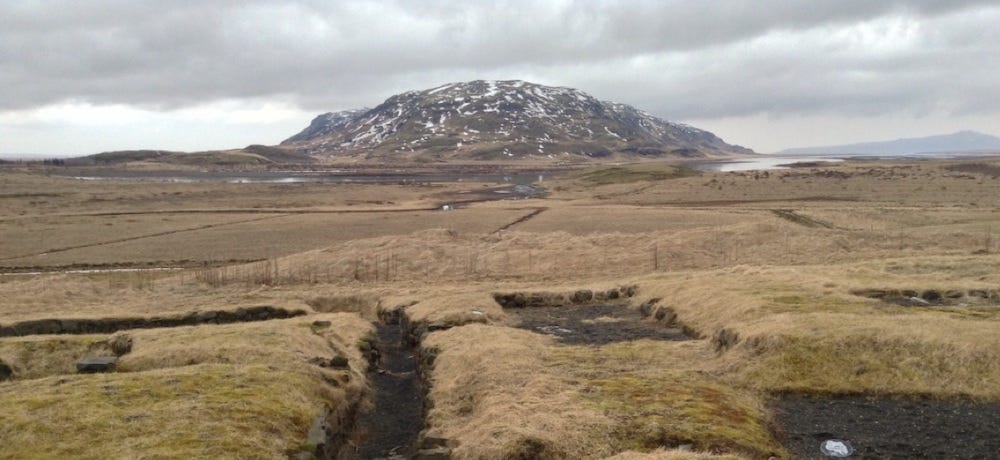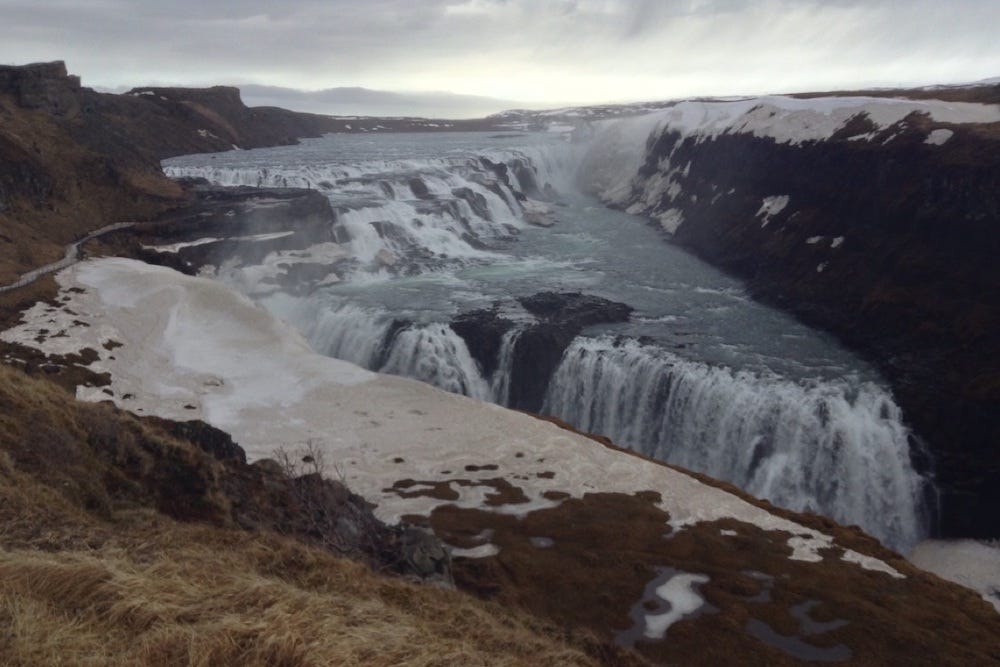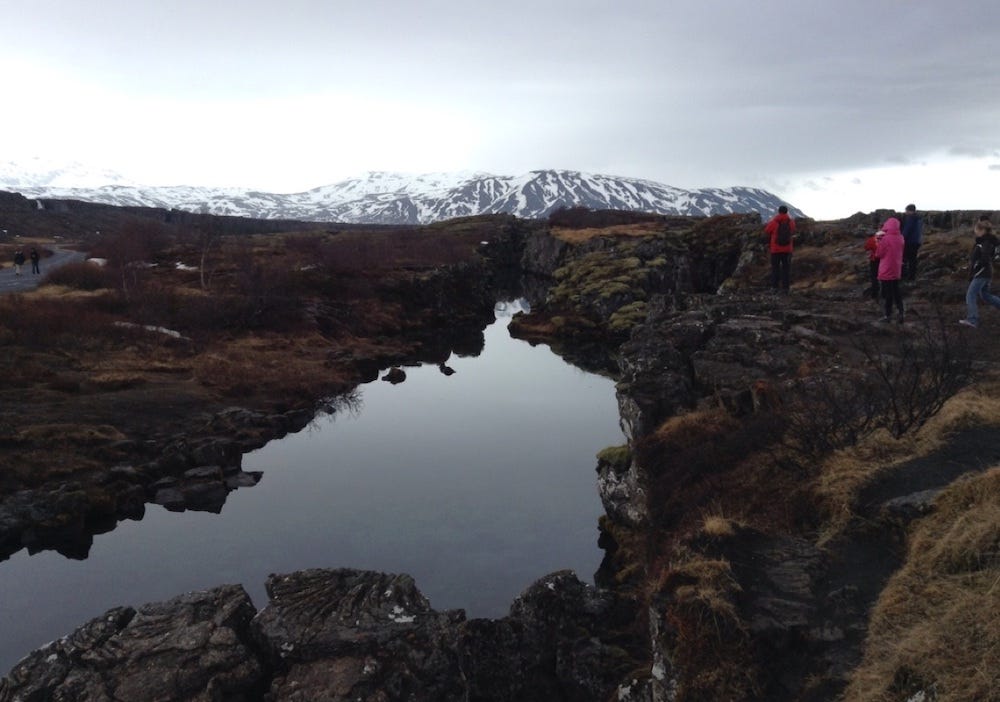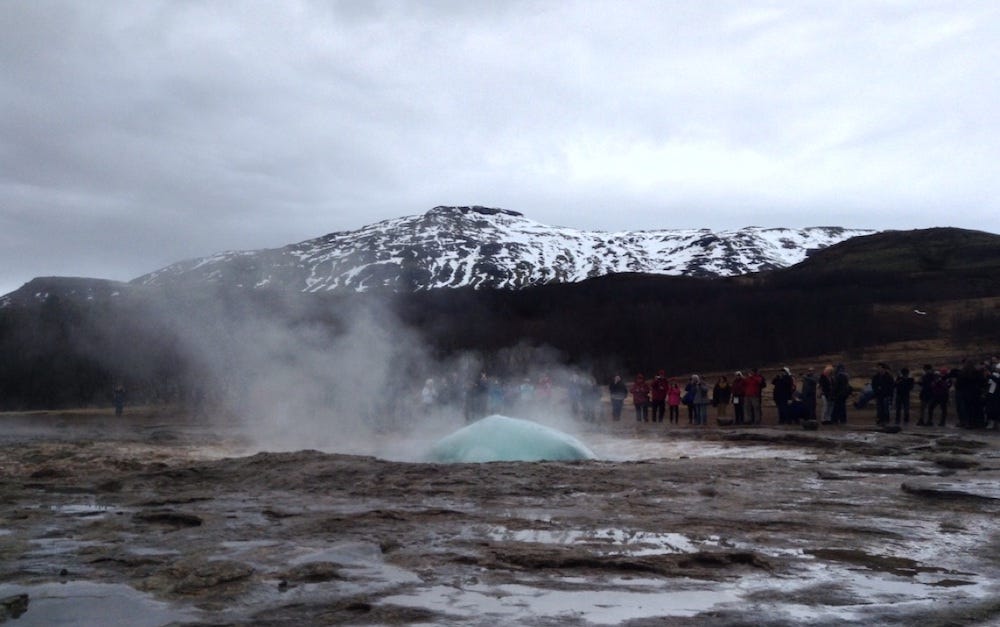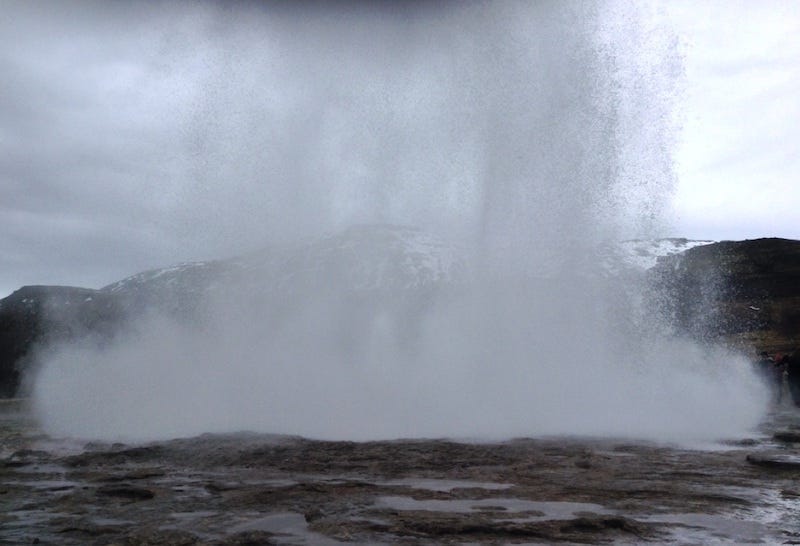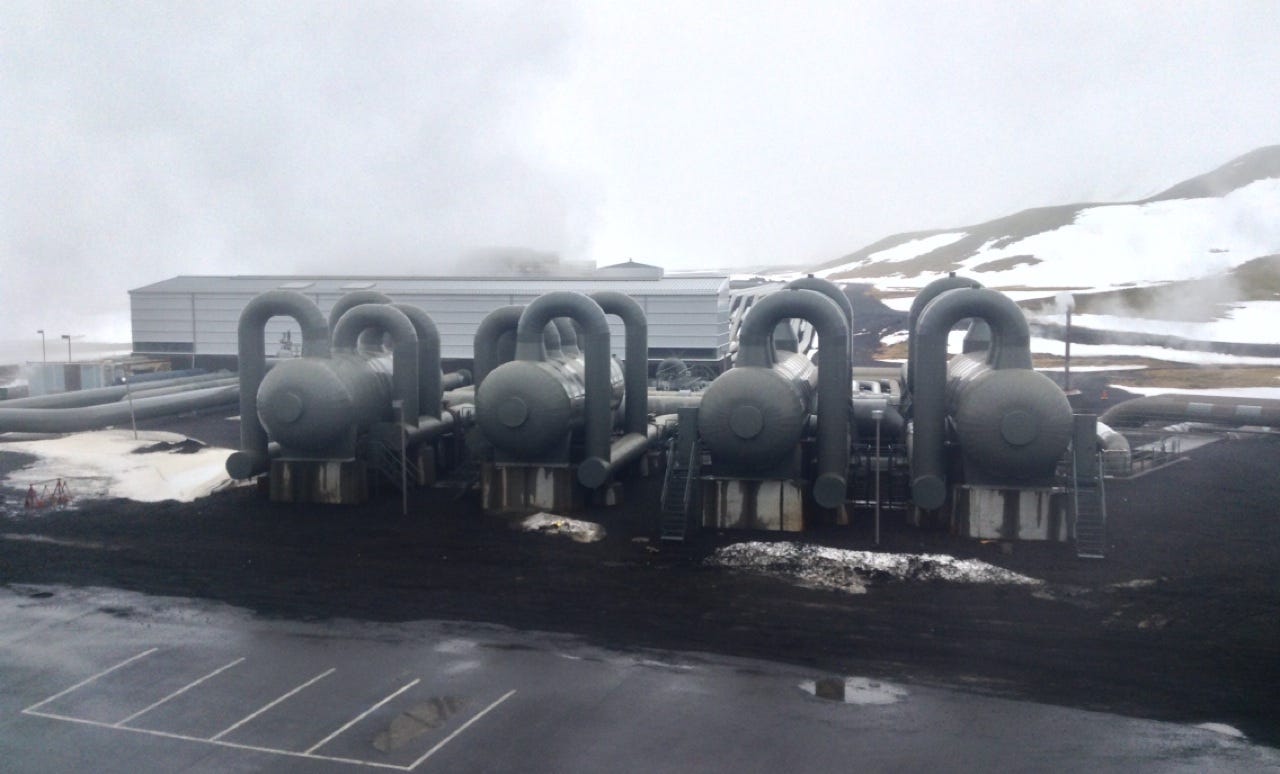Today's tour was a long bus ride round the Golden Circle. I knew little other than that this was a big draw, and that was only confirmed as first one and then two coaches filled up.
I've not been on many tours, and have generally been lucky - more young than old, and a reasonably cosmopolitan crowd. Less so today, there are too many Brits in Iceland, so I could at most points of the day hear someone misunderstanding something - "12 degrees outside, it says, and this their summer" - or reflexively complaining about something they couldn't change, in an attempt to make it someone else's problem.
For all that, it was a good tour, if an experience that enhanced my perspective from outside, that England is populated by depressives without a sense of perspective, particularly about the weather - which is far more varied and far more extreme in all corners of the world.
Our guide was talkative, and Icelanders seem generally to have a voice that is very easy on the ear when they switch to English, so he was good to listen to. He was also not into folk taxonomy and the like - no easy 'and that's where we get the phrase 'worth his salt' from!' style nonsense here. In fact, he was slightly confused by the question of where the edge of the two plates was while we were a tour first stop, but we tourists are all told there's a spot where you can stand on each side of the North American and Eurasian plates, so I knew where the question was coming from. Our guide waved us across and said well, here, all here in this Rift Valley is the gap, it is about 7 kilometres wide.
That stop was at historic, if bleak and remote seeming, Pingvellir (that first character should be an Icelandic one, a p with the bubble in the middle) where their parliament used to be, though it is hard to pick the exact spot on which bits stood as the scenery 'is on the move' between those two plates. There weren't any permanent buildings, either, as this is where all occupants would meet for the two weekly parliament settings, outside and in summer.
As we moved on he pointed out the woodland, making the point that they have very scarce flora; the joke is "you know what to do if you get lost in an Icelandic forest? Stand up."
By lunch we were at the Golden waterfall, named either for the effect caused by the sun late in the day, or a farmer of old who was so keen that no one else have his gold once he died that he poured it all into the waterfall. A quote from the early twentieth century reckons they outdo Niagara in ferocity, but as I was there more recently than they can possibly have been I'm going to pull rank and suggest that isn't so. It is stunning, though - and also the coldest and most exposed part of our tour, with a gusty wind blowing us all over the place. There are a few viewpoints an easy walk apart and I made it to them all before heading for sanctuary in the cafe.
We stopped to see the original Geysir, which gave the world the name. He doesn't go up much, but they do have a relatively natural spurter, which goes up every 5-8 minutes. I say 'relatively' because although it isn't induced with a soapy mixture as the one in New Zealand was, it was drilled into in 1963, to reawaken it. Still, impressive, with a good range of screams and instinctive running away from those gathered. Seemed odd to me - I'm startled by all sorts of things, but a geyser with rope stretched round at what must have been marked out as a safe distance isn't one of them.
Next was the Bishopric of Skálholt, a major site for education and religion from 1100-1800, when church and school were moved to Reykjavik. As our guide talked of old and new gods on the way there, I faded off to sleep. After the church he let us know the nation isn't very religious, then spoiled this modernity by telling us a few stories about the elves, or hidden people - apparently 40-50% of the population really believe in them. I liked the origin story, though, for its simplicity in building on the Adam and Eve myth. Eve was asked by "almighty god" to show him her children, she only brought some, declared that was all, so god said 'if these are all you can see, then so shall it be' and turned the others into the hidden people.
As we moved up into the hills towards our last stop, the geothermal power plant of Hellisheidarvirkjun 'headlessadie' (sounds a bit like Headless lady), it grew foggy. From behind me I could hear clearly the American family to whom the back third had been listening all day, but they now used their secret weapon, as they were equipped with Laser Range-finding kid; "I can only see like 17 metres away now". It grew thicker still and the bus went quiet, all of us willing the driver to be able to see safely through. "Okay, now I can only see like 3 metres" said the LRF kid.
I figured this would be the dull point of the tour, but actually it was the high point of what is, with hindsight, a great and varied trip. At the power plant is an exhibition on geothermal power, and that's why the tour goes there. Fascinating. 99.5% of Reykjavik's heating and water comes from there, 90% of the country is heated by one of the six geothermal plants (the other 10% use hydro power for electricity). The cost is around 60 euros a month and so water and energy are plentiful here, and all power is provided sustainably. Iceland is somewhere you can have a long shower without guilt, and the profligacy explains why the youngster next to me last night switched the tap on and left it running while brushing his teeth. The staff member did roll his eyes as he suggested that Icelanders go elsewhere in the world and behave the same, but at least they have licence here. There are several boreholes drilled 3km into the active volcano behind the plant to tap into water which is 340 degrees, under pressure, to release energy. A quarter of iceland is an active volcanic zone, so they have plenty of energy to tap into. Pity you can't bottle it, though a short film ends on the hopeful note that there are lots of areas in the world where tectonic plates meet which might be able to tap into something similar.
We were back as promised at 5, and with the Northern lights tour cancelled I went for my back up option of wandering round town and then heading for the second semi final of the Icelandic Music Experiment at Harpa. Musicians and bands aged 13-25, and a real variety. First up a soloist playing wistful ballads, next a metal or rock group with a shrieking lead singer who got everyone laughing, and a trumpeter dressed as a wood spirit (I think). "Was that Klingon at the beginning?" I heard someone ask at the interval, so maybe it wasn't just me who didn't follow - but then, I only understood the few words sung in English anyway. Following a band with a trumpet was one with a saxophone, one of two groups to have a lone female, this one singing and playing bass, before on came a more boy-band looking group with a preening but gorgeous-so-he-got-away-with-it lead singer. They were followed by a mad metal group. The picture on screen - large man with 'I kill children' written behind him - made it clear they weren't complete when they started, the music stopped and on he stomped in mask before banging into both numbers, distributing confetti and his coat around the audience.
He went back for the coat. Last up were two rappers. No idea what they said, but I liked it, and they held the stage despite the lead looking young and nervous beforehand. I quit while I was ahead at halftime, lest someone ask me my opinion, and scooted off for some more supermarket beer. I see why alcohol is described as expensive now - the price of supermarket beer isn't bad, but it is all 'light beer' and only 2.25%. If I find some heavy beer I expect to pay double UK prices or more.
Reading: Philip K Dick, Stigmata of Palmer Eldritch.



